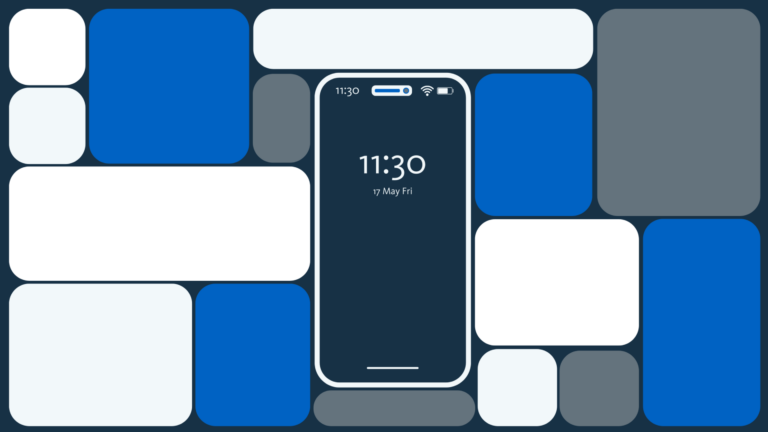Reduce truck rolls and save money with these 3 CX practices

When consumers request a new telecom service, there are two paths to installation: self-installation or professional installation. Self-installation is the least expensive and fastest method, but it requires that homes be technologically ready for the service, and the process must be clear enough so that customers can easily follow it, especially when they run into snags. Brand new services such as fiber, however, will require a professional installation, which means the telecom company will need to do a truck roll, and that can be costly. Truck rolls can be a significant barrier to ROI and profitability for telecom companies.
Estimates vary on the cost of a truck roll, ranging from $600 to $1,000, so optimizing profitability means telecom companies should eliminate the need for a truck roll in activation as much as possible. In the instances where professional installation is required, it’s critical to complete the installation successfully the first time, not only to avoid another costly truck roll, but because your customer’s experience—and loyalty—relies on it. Thankfully, with the right UX, telecom companies can accomplish both of these goals.
Market opportunities in telecommunications and the role of truck rolls
There are a few areas for growth for telecommunications organizations today, including MVNO opportunities and migration to fiber optics. In fiber optics specifically, activation requires truck rolls to start a customer’s new service—but reducing truck rolls after activation is still crucial for profitability. Consumer fiber is a huge opportunity for telecom, and 2023 was a breakout year, with a majority (51.1%) of homes able to access fiber by the middle of the year. This is an impressive gain from 2018 when less than a quarter (24.4%) of U.S. homes had fiber access. Not only can telecom companies charge more for increased speed and capacity, but those gains also enable additional, more advanced services that can bring in even more revenue.
However, the deployment of fiber is already expensive, costing anywhere from $700 to $2700 per home, depending on density, terrain, and other factors. With one truck roll costing up to $1,000, it’s easy to see how additional trips cut into the profitability of each customer. This is true for any other growth direction, as increased truck rolls will only reduce chances of success in a new venture.
3 Service design-focused telecom practices to implement immediately
So, how do you avoid unnecessary and costly truck rolls? Focus on your customer and employee experiences with a design-forward strategy at every touchpoint—physical and digital. Prioritizing your customer and employee experience with a service design approach will set telecom companies up for success by saving time and money while increasing satisfaction and loyalty. Let’s dive in.
1. Build an effective, comprehensive self-serve activation system
Self-serve activation through self-install kits should be the ideal for telecom organizations since it’s fastest for customers and low cost for providers, so it’s worth investing in creating an excellent activation process. Keep the following in mind:
- Ensure that there’s a system for providing crystal-clear onboarding steps for the customer. These instructions should have easy-to-follow self-activation steps and troubleshooting paths. Remember that what seems clear to someone on your internal team will not necessarily be clear to customers. (Telecom professionals are a poor judge of the quality of a process because they’re far too close to the process.) It’s critical to test and then improve the activation process with potential customers who have many different situations. Design research fundamentals and customer feedback loops are essential at this stage.
- Continuously monitor for activation trouble. Signals like spikes in call volume to customer service may indicate that something about the activation process is not working. Dig into call center analytics and get familiar with them if you aren’t already.
- Use content strategy principles to build and maintain a database of knowledge articles. An expansive knowledge base of articles to accompany the activation process helps customers to self-troubleshoot. Videos are especially helpful for consumers, but if you go this route, make sure you don’t bite off more than you can chew. The telecom industry is constantly changing, so you’ll need to commit to updating these videos regularly, which can be expensive and time-consuming. Having old, out-of-date videos can cause customers more confusion and is worse than having no video at all.
2. Prepare the truck and the technician to ensure the truck roll only occurs once
When a truck roll is necessary or the only solution, it’s important to take measures to ensure that the first visit solves the problem for the customer. If the first visit doesn’t resolve the customer’s issue, not only will costs rapidly increase with every additional trip, but you risk creating friction and losing customer trust and loyalty. Here are the essentials to reducing the likelihood of follow-up visits:
- Put procedures in place to verify that the customer will be home when the technician arrives. This includes providing clear instructions on ensuring that the technician can enter the property and access the communications box—especially if the customer lives in an apartment or multi-dwelling unit. This instruction needs to be documented, should be written clearly, and must anticipate common challenges and roadblocks for customers and technicians. It’s key to provide an easy way for customers to update their technician should anything change and vice versa, for the technician to connect with them when they’re on their way.
Ready to improve your CX and EX?
Our telecom experts can help!
- Create processes that ensure the sales-to-service handoff provides technicians with the necessary knowledge. Service tickets should accurately describe the issue the customer faces and the job that needs to be done. In the sales-to-service handoff, implement processes and procedures that require double checking their accuracy. The technician should fully understand the needs of the customer before arriving on site.
- Ensure technicians have everything they need to complete the job. Remember that an accurate ticket won’t do a technician any good if they arrive onsite to find that they’re missing essential tools and materials to complete the job. Pilots have to go through a checklist before every flight, even though they’ve likely done this hundreds, maybe thousands of times before. It’s worthwhile to do the same before the truck leaves the facility. The technician should have an easily accessible list of everything required for every ticket that day, and they should double check to make sure everything is on board before they start the engine. This will save both parties time and potential frustration.
3. Provide call center agents with the tools and processes they need to troubleshoot problems
When customers run into issues they can’t solve on their own despite a strong process, the next step is to call customer service—which can still be far less expensive than a truck roll. If the call center can resolve the issue and complete activation, the telecommunications company will substantially reduce costs. And to ensure a high-quality customer experience with the call center, telecommunications companies must invest in creating a great employee experience for their agents.
- Enable Next-Best Actions (NBAs). Call center agents must have access to the information they need when they need it, and enabling Next-Best Actions can create deflection opportunities and route high-touch customers to self-service channels. Tier 1 agents should be able to guide customers through different troubleshooting steps based on carrier and device information.
- Learn first-hand how the call center is currently working. It’s important to understand how your call centers truly work, not just how you think they work. This can be done by listening to calls, assessing workflow across centers, and interviewing call center agents. Listen to your agents because they will likely have important insights into ways to improve processes and consolidate tools. Ensuring that customers have a consistent, omnichannel experience by creating back-end systems to collect and distribute data to multiple channels allows customers to have a consistent experience across channels and pick up right where they left off when they return.
- Measure the right metrics. Create KPIs that truly reflect progress towards business goals. The widely used net promoter score (NPS), for instance, really doesn’t measure anything useful for a call center. After all, do you ever recall recommending that someone call a specific company’s customer service call center?
Don’t waste time and resources; Tackle your CX and EX challenges with a service design strategy
Reducing truck rolls through a well-designed CX and EX is crucial for telecom companies to take full advantage of new business opportunities, such as fiber-to-the-home. By investing in creating an excellent self-serve activation process, ensuring a strong knowledge base, improving CX and EX in call centers, measuring the right metrics, and taking measures to ensure that truck rolls are successful when necessary, telecom companies can significantly reduce costs and increase profitability.
Is your telecom organization ready to invest in its customer and employee experiences? We can help. Chat with our team of experts.



